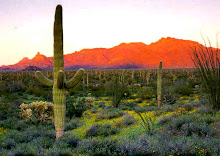
- 1/6/14: Receive Course Syllabus, lecture and reading on "Kingdoms of the Living World"
A couple good videos on the different kingdoms: http://www.youtube.com/watch?v=TPZSoNY9vAo&feature=related
Funny video on the taxonomy of the animal kingdom: http://www.youtube.com/watch?v=VOkQimDzr2Y&feature=related
And an awesome video on the Tree of Life, with David Attenborough: http://www.youtube.com/watch?v=H6IrUUDboZo&feature=related
- 1/8: Microscopic observations of each Kingdom, "Kingdoms of the Living World" continued
- 1/9: Finish "Kingdoms of the Living World", Taxonomic Groupings Activity, begin lecture and reading on "Modern Evolutionary Classification"
- 1/13: Finish "Modern Evolutionary Classification", begin Taxonomy Projects, Taxonomy HW (DUE Thurs. 1/16):
2. Describe the characteristics of each Kingdom in the Domain Eukarya on a cellular level
3. Describe the characteristics that are common to all animals
4. Explain why scientists avoid using common names for species
5. What were the problems with traditional methods of classification, and why?
6. Describe the 2 new methods that scientists use to refine the classification system
7. Complete the "Quick Lab" on derived characters from your "Modern Evolutionary Classification" handout (5 PTS.)
- 1/15: Taxonomy Projects continued
- 1/16: Taxonomy Projects continued (DUE Weds. 1/22, and be ready to present your projects!)
- 1/20: No School- Martin Luther King Jr. Day
- 1/22: Project Presentations, begin lecture and reading on "Ecology of the Northern Gulf"
- 1/23: Project Presentations continued, "Ecology of the Northern Gulf" continued
- 1/27: Finish "Ecology of the Northern Gulf", Ecology of the Northern Gulf HW (DUE Weds. 1/29):
2. How are the Sea of Cortez's tides created?
3. How do the tides influence the ocean's ecosystems?
4. Why are the waters of the Sea of Cortez renowned for their diversity?
5. Describe the 2 ecosystem services that estuaries provide
6. Describe the characteristics of each of the intertidal zones
7. What abiotic factors influence the intertidal zone?
Receive Timeline of Animal Evolution, lecture and reading on "Introduction to Porifera", Porifera HW (DUE Thurs. 1/30):
1. Describe the important function of archaeocytes
2. Describe, in general, the niche of a sponge
3. Identify and describe one symbiotic relationship involving sponges from the handout
4. Describe the 2 methods of sponge reproduction
5. Research the uses of sponges in medical research and summarize one example. Cite your source.
6. Describe the relationship between sponges and wedding shrimps. Cite your source.
7. Describe the relationship between sponges and snapping shrimps. Cite your source.
Spongebob on sponge reproduction: http://www.youtube.com/watch?v=4JIytOL-Q18
Great BBC video on "The Wonderful World of Sea Sponges": http://www.youtube.com/watch?v=BW05vMziy2o
Sponge filter feeding in real time: http://www.youtube.com/watch?v=T7E1rq7zHLc&feature=related
Good video on sponge reproduction: http://www.youtube.com/watch?v=mVavqt4Sbyo&feature=related
Good but technical video on sponge chemicals and medical research: http://www.youtube.com/watch?v=QbonY3-u06I
One last treat: http://www.youtube.com/watch?v=XWdCVzNcWdI
- 1/29: Begin lecture and reading on "Introduction to Cnidaria"
- 1/30: "Introduction to Cnidaria" continued, begin watching "Blue Planet: Coral Seas"
- 2/3:


Dope
ReplyDeleteAwesome videos
ReplyDelete